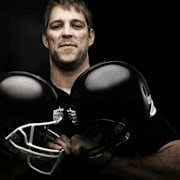Hyperbaric Therapy for Brain Health: A Potential Path to Healing Brain Injuries

In my discussion with Dr. Joe Dituri on Power Athlete Radio, we explored the potential of hyperbaric oxygen therapy (HBOT) for healing brain injuries, including the effects of concussions and trauma from contact sports like football. Dr. Dituri, a leading hyperbaric expert, explained that HBOT might offer a way to stimulate neurogenesis - the growth of new neurons - and increase synaptic pathways in the brain. This concept of promoting a “superhighway” of connections offers hope for many who, like me, have faced long-term effects of head injuries.
The promise of HBOT lies in its unique ability to deliver concentrated oxygen to the brain. By using pressurized chambers, HBOT allows oxygen to dissolve directly into the bloodstream, even reaching the tiny capillaries and damaged tissues that are hard for oxygen to access under normal circumstances. This oxygen-rich environment creates conditions that may help the brain repair itself, forming new connections and bolstering existing pathways between neurons. This can be particularly beneficial for areas of the brain that may be under-functioning or impaired due to injury.
In Dr. Dituri’s experience, HBOT has been effective for treating not just concussion syndromes but also severe brain trauma and neurological symptoms stemming from explosions or other violent impacts. His observation echoes a growing body of evidence suggesting that HBOT may aid in the recovery of individuals suffering from traumatic brain injuries (TBIs). Since brain injuries can disrupt everything from memory to mood and cognitive processing, the idea of “reconnecting” damaged neural pathways could significantly impact recovery.
Brain injuries are especially challenging to treat because, unlike other organs, the brain can’t be fully examined or “seen” in real-time. As Dr. Dituri pointed out, most of our understanding of the brain is based on images and scans that offer a static view. While MRIs, CT scans, and SPECT imaging provide snapshots, they can’t always capture the complex, ongoing processes of injury and recovery. This limitation makes HBOT’s impact on neurogenesis and synaptic repair all the more valuable, as it provides a means to stimulate healing even when direct observation and intervention are challenging.
For me, this topic hits close to home. Having gone through Dr. Daniel Amen’s study on NFL players, I know the toll that brain injuries can take. My scans revealed damage in my left frontal lobe, an area of the brain associated with emotions, empathy, and social processing. This type of injury can impact everything from emotional responses to decision-making. Although questions remain about some aspects of brain imaging and TBI studies, the evidence of damage to parts of the brain responsible for such vital functions is clear.
The possibility that HBOT could help stimulate regrowth and repair in these areas is incredibly encouraging. While traditional treatments have focused on medication and rehabilitation therapies, HBOT stands out as a non-invasive, scientifically backed alternative that provides real physiological benefits. By enhancing oxygen flow and supporting cellular function, hyperbaric therapy could play a critical role in helping individuals with brain injuries regain cognitive function and improve quality of life.
Dr. Dituri and I both share a vision where athletes, veterans, and individuals with brain injuries can access alternative treatments like HBOT that not only address symptoms but help restore brain health. The brain may be difficult to study directly, but the results of hyperbaric therapy are promising, offering a new frontier in the healing journey for those with TBIs and related conditions.
